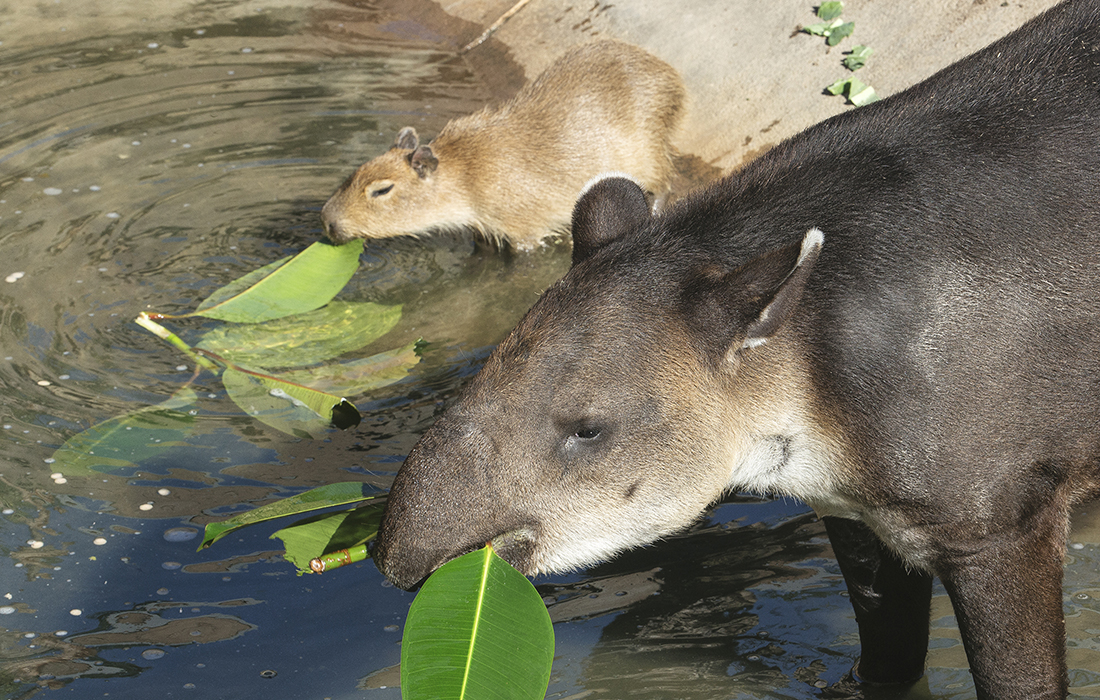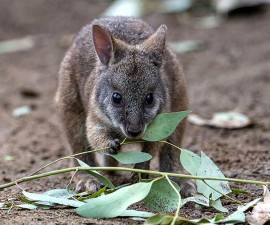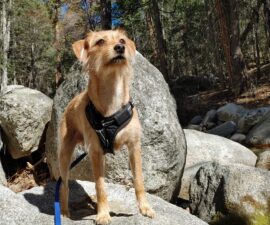BY Peggy Scott
Photography by Ken Bohn
Buttercup would like to eat her Bermuda hay breakfast, but first the capybara must wait for G, the African spur-winged goose, to get up from sleeping in it. It’s just another day in this multi-species exhibit in the San Diego Zoo’s Harry and Grace Steele Elephant Odyssey—but there’s no such thing as typical. “Everyone pretty much does their own thing,” says senior keeper Julie Anderson. “But when the different species interact, it can be so cute.” With the arrival of two baby capybaras one year ago, the cute factor increased exponentially.
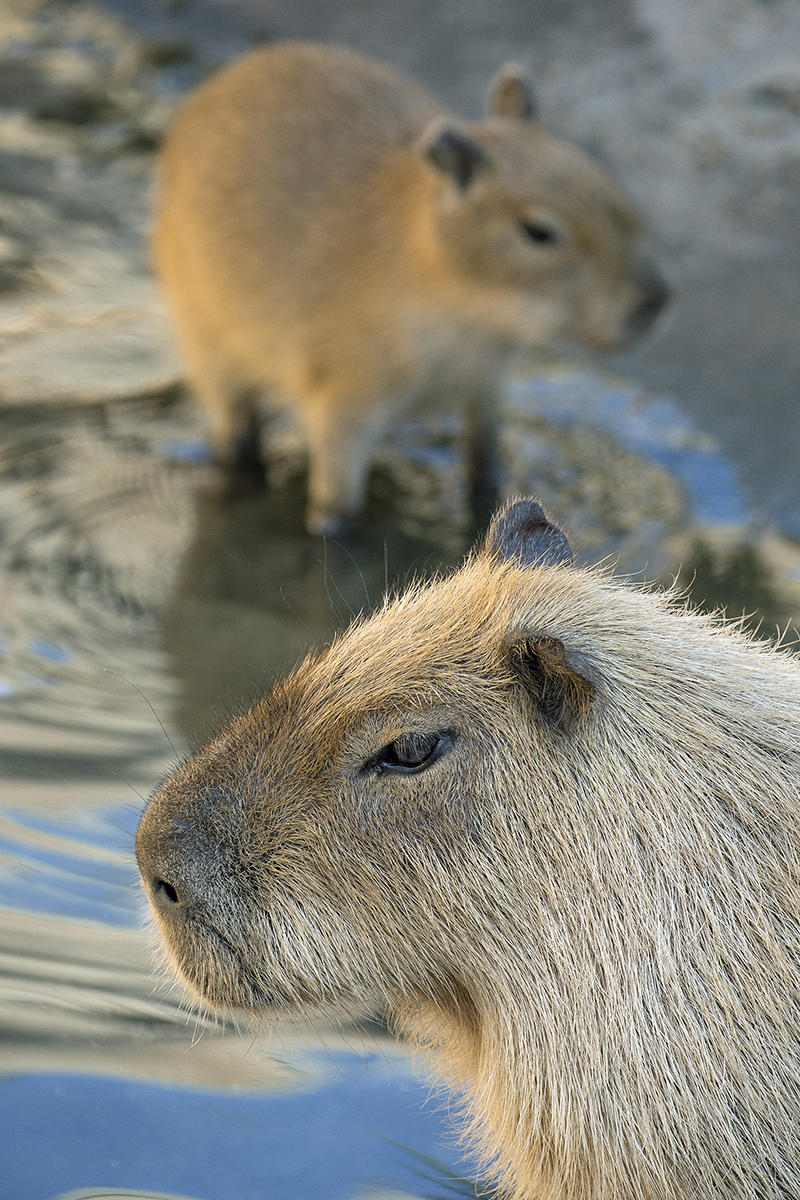
STANDING TALL
Capybaras are the world’s largest rodents, measuring about two feet tall at the shoulder.
Not-So-Strange Bedfellows
It might seem odd at first to see capybaras, the world’s largest rodent, rooming with tapirs, whose closest relatives are horses and rhinos. But in the wild, both species inhabit ranges in South America, so it’s not unusual for them to be neighbors—even neighborly—and that is the concept behind this type of exhibit. “Typically, a mixed-species exhibit is one that has a variety of animals from the same habitat living together without conflict,” explains Carmi Penny, director of the Collections Husbandry Services department and curator of mammals.
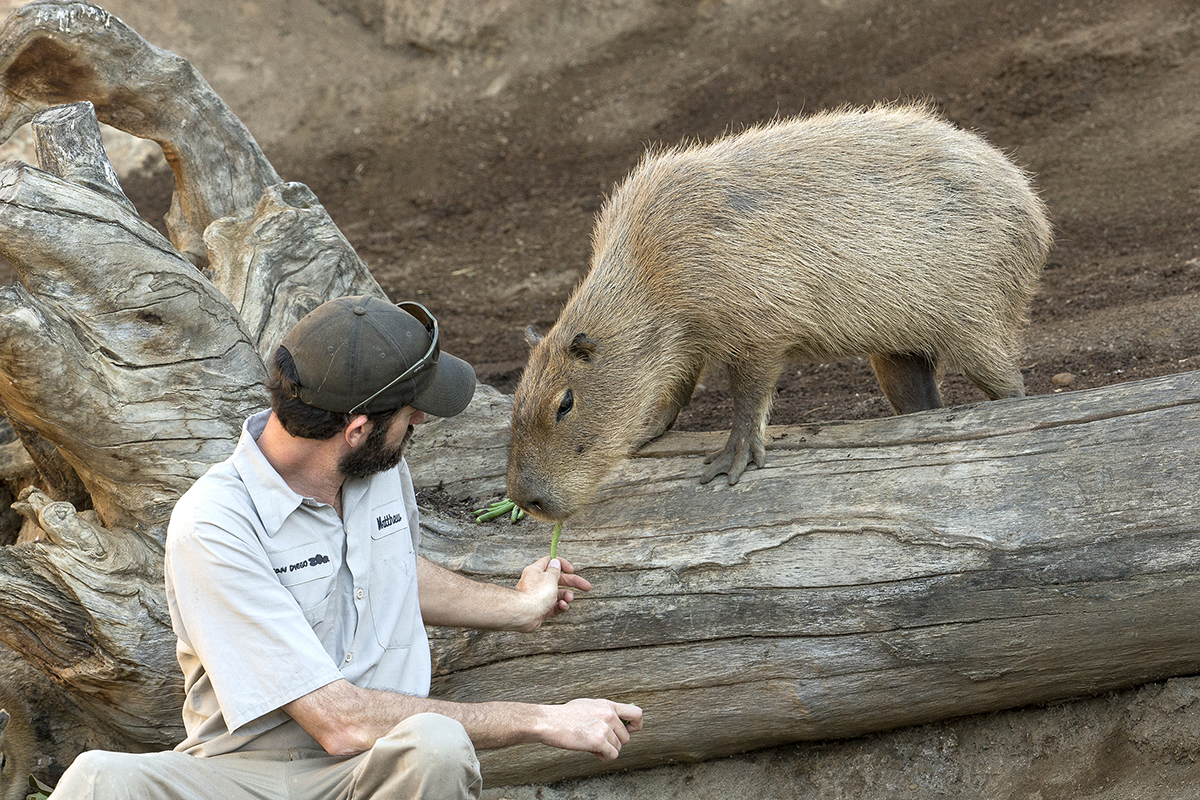
GENTLE GIANTS
The docile, mild-mannered capybaras enjoy interacting with their keepers.
The exhibit includes elements the animals would seek out in the wild, such as shady places for napping, sandy areas for sunbathing, and a pool for wading or swimming. The pool isn’t a luxury for the resident rodents. Capybaras—found on riverbanks, beside ponds, and in marshes in Central America and east of the Andes in South America—have particularly dry skin and require a swimming hole to stay healthy. This regimen starts early, too, Julie notes. “The babies can swim almost immediately after they’re born,” she says.
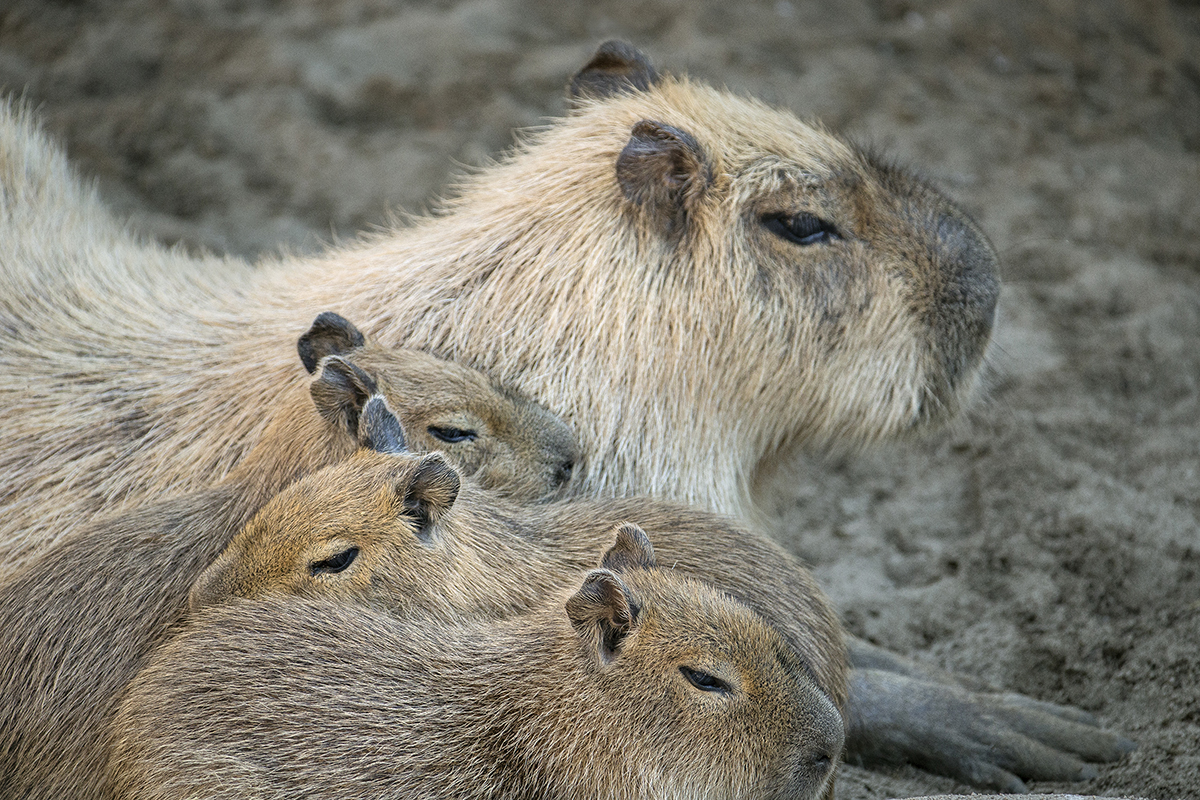
FAMILY MATTERS
All the female capybaras in a family group help take care of the babies.
Rodents of Unusual Size (ROUS)
The new babies sprouted from a family tree with names rooted in fantasy—and perhaps a fire swamp. Weighing up to 40 pounds, it’s fair to characterize capybaras as “rodents of unusual size,” or ROUS, the name given to those fanciful human-chomping, swamp-dwelling creatures in the book and film The Princess Bride. The young capybaras’ father and mother are named Wesley and Buttercup, the hero and heroine of that story, and it’s quite possible the pair shares “twoo wuv,” as their current litter brings their offspring count to 24! In keeping with the theme, earlier babies found themselves dubbed “Inigo” and “Valerie” (she still resides at the Zoo). But with the subsequent arrival of so many “kids,” the Princess Bride-themed name options dwindled pretty quickly. “These three are all boys and are called Eenie, Miney, and Moe,” keeper Nicole Johnston says. “And because they look so much alike, we shave a little patch on a different spot on each one to identify them.”
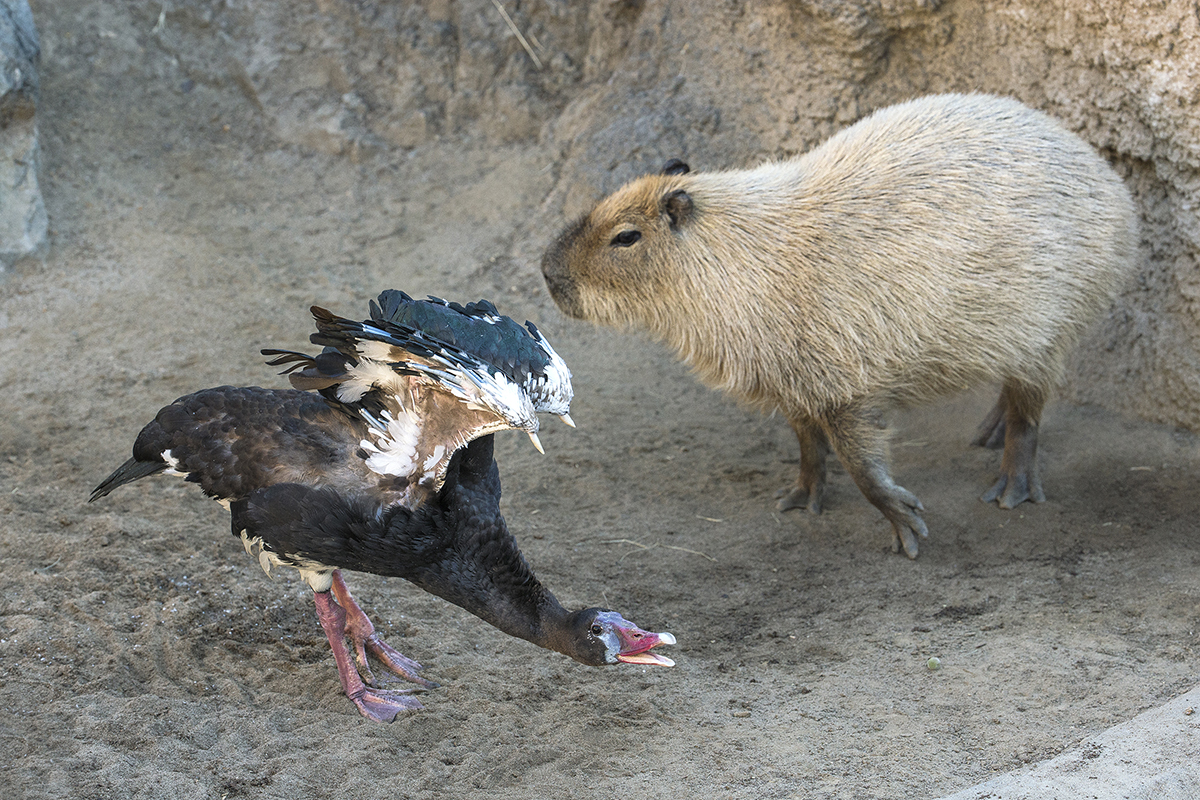
INTERESTING NEIGHBORS
G, the African spur-winged goose, likes to be “in charge” of the exhibit.
Capybaras may be large like ROUSes, but you can’t judge a book (or movie) character by its cover. Unlike the fictional bloodthirsty, rapacious rodents, capybaras are mild-mannered and sociable. ”We hand-feed ours, and they like petting and scratching,” Julie says. “When they really like it, they puff their little ears out.”
Capybaras also enjoy the company of other capybaras. They typically live in family groups of around 10 members, but groups of up to 100 have been reported. The three babies at the Zoo live with Buttercup and two other female capybaras, Valerie and Bristle, the latter of which is also Wesley’s daughter; and a group of Baird’s tapirs, Rachel, Tatum, Luna, and Felix. All the females in a capybara group help care for and nurse each other’s babies, so Buttercup has built-in sitters for her brood. Wesley rooms with Tatum, a male Baird’s tapir, and their ungulate pals, the guanacos—Gaby, Paz, Rosita, Muñeca, and Isabel—in an adjacent enclosure. Guanacos also hail from South America, inhabiting desert, savannas, scrubland, and forests. Guanacos count vicuñas, llamas, and alpacas among their relatives.
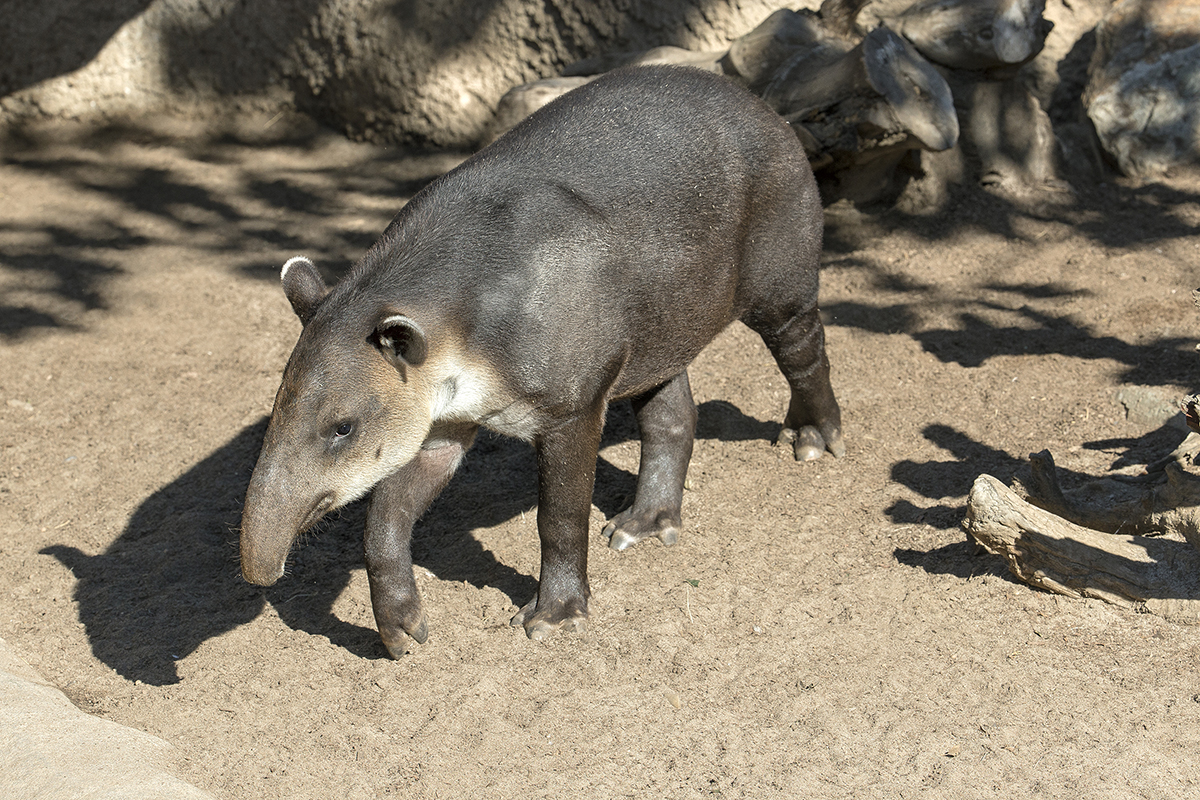
CLOSE, BUT NOT QUITE
The tapir’s distinctive snout is often mistaken for a trunk.
“Horse” (and) Feathers!
The capybaras’ exhibit-mates may not be literary or cinematic figures, but their real-life story is an interesting one. Seemingly built by committee, Baird’s tapirs have stocky, almost hog-like bodies covered in dark, reddish-brown, short fur; hippo-esque toed feet; and a snout that could be mistaken for a small trunk. “People ask if they are pigs or anteaters,” says senior keeper Kimberly Hyde. “But they’re most closely related to horses and rhinos. They’re excellent swimmers and can stay underwater for several minutes.”
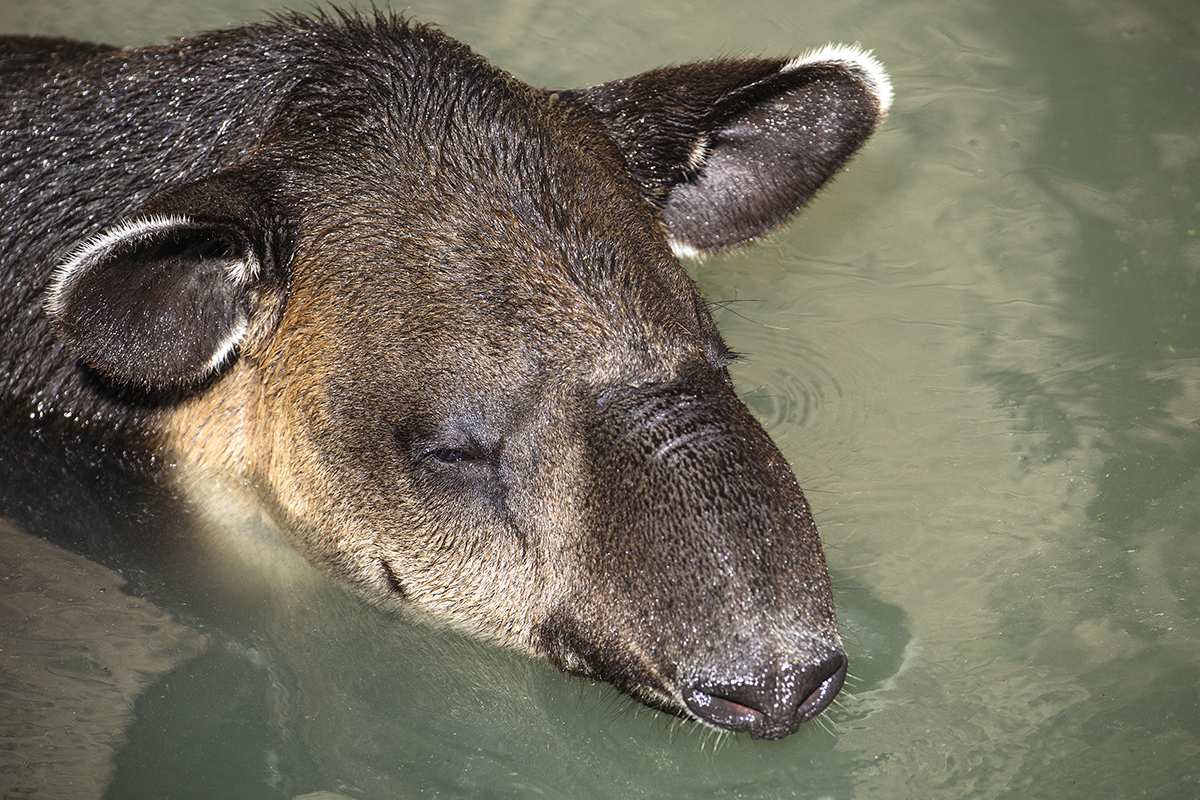
THE WETTER, THE BETTER
Tapirs love the water and are excellent swimmers.
Two of the tapirs, Tatum and Rachel, have the amiable, mellow personality that often comes with maturity—Tatum is 34 and Rachel is 31. When the tapirs aren’t sunning or taking a dip in the pool, they are contentedly munching hay, ficus browse, or other greens. They seem to be almost fond of their respective rodent roommates. “Rachel nuzzles the baby capybaras sometimes,” Julie says. “And the boys get along fine.”
If there is anyone in this micro-environment who might ruffle a few feathers, it’s G, the resident African spur-winged goose. As his name indicates, this large bird is found in the wetlands throughout sub-Saharan Africa—a long way from South America! The relocation, Nicole explains, was the result of an in-flock flap. “G wasn’t fitting in with the birds in his other exhibit, so we put him here,” she says. “And he is sure he is absolutely in charge of the whole exhibit. He’s the boss.”
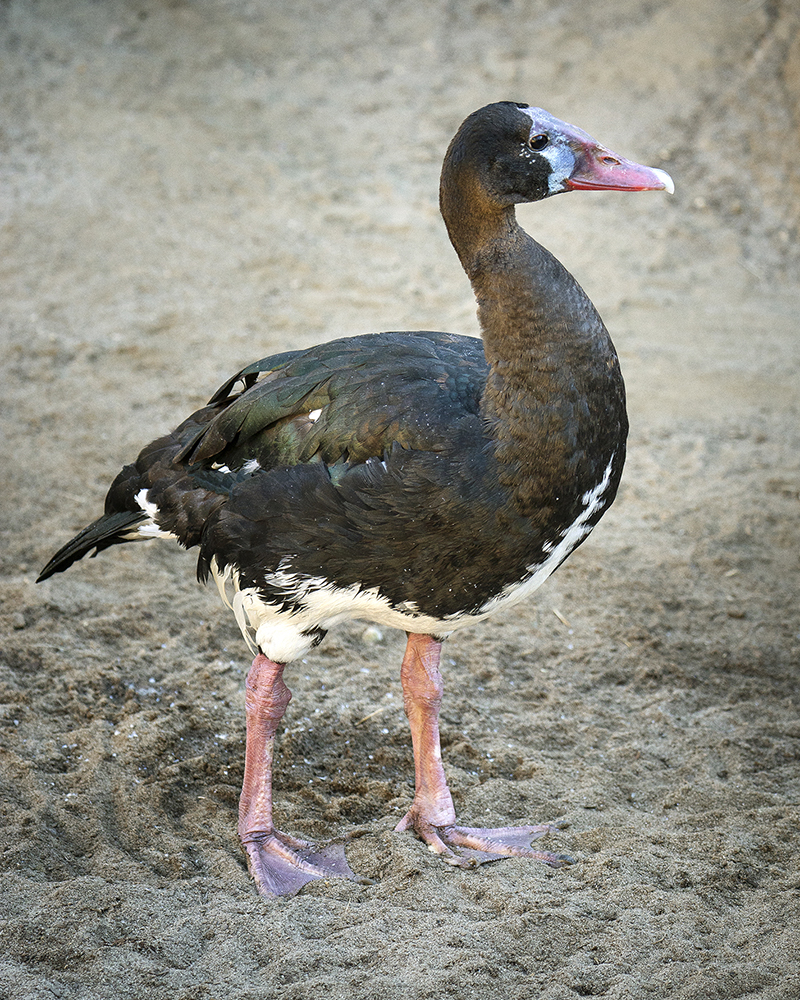
TOP BIRD
G the goose rides herd on his furry “flock.”
When the feisty feathered one isn’t napping in someone’s meal or sharing it (he helps himself to bits of the capybaras’ greens, veggies, and pellets), he’s riding herd on the other inhabitants. “He teases the young capybaras before he settles in with them,” Nicole says. “He likes to think he runs the place, and we let him think that.”
If there’s a moral to this story, it’s that being different doesn’t mean everyone can’t get along. Can visitors stop by to check out the latest chapter in this furry and feathered tale? As Wesley (The Princess Bride’s Wesley, not the capybara) would say: “As you wish.”

